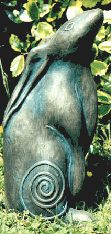
Subject: Simon Czaplinski.
Photographer: Paul Reitz.

 The following is excerpted from Brian Pronger’s The Arena of Masculinity: Sports, Homosexuality, and the Meaning of Sex.
The following is excerpted from Brian Pronger’s The Arena of Masculinity: Sports, Homosexuality, and the Meaning of Sex.
I [draw] a distinction between objective and subjective homosexuality. Objective homosexuality is merely a matter of two persons of the same sex engaging in sexual activity. Objective homosexuality describes observable, physical behavior. Subjective homosexuality, on the other hand, refers to the psychic dimension of sexual experience. This psychic dimension . . . is the domain of eros. So, subjective homosexuality is the psychic world of homoeroticism. It’s possible for two men to engage in objectively homosexual behavior and not experience it as homoerotic. This is often the case in boys’ schools, prisons, the military, and other exclusively male environments where men engage in homosexual acts without finding it homosexually significant; they don’t think of themselves as homosexual and often don’t consider their objectively homosexual behavior as a homoerotic expression. It is just a substitute for sex with a woman. This is not to say that there aren’t men in prisons and the military who experience a homoerotic dimension in their sex with other prisoners, soldiers, or sailors. The point is, the act does not necessarily define the individual’s psychic experience.
Homoeroticism lies in the individual’s paradoxical interpretation of the myth of gender. . . . One of the effects of being paradoxical, of being gay, is estrangement. Gay men are estranged from the culture from which they themselves have emerged.
– Extracted from Pronger, B. The Arena of Masculinity: Sports, Homosexuality, and the Meaning of Sex (St. Martin’s Press, 1990), pp. 81-82.

 The mountain hare is not very much bigger than a large rabbit. . . . Its summer coat is an excellent camouflage especially in flowering heather or the mosses and course grasses of the moors. On bare stony ground and against the blue shadows of lichened rocks on a sunny day it is perfect. In summer too there are many places where hares can hide in long old heather or grass. But the winter coat is a terrible danger to the hare unless there is snow.
The mountain hare is not very much bigger than a large rabbit. . . . Its summer coat is an excellent camouflage especially in flowering heather or the mosses and course grasses of the moors. On bare stony ground and against the blue shadows of lichened rocks on a sunny day it is perfect. In summer too there are many places where hares can hide in long old heather or grass. But the winter coat is a terrible danger to the hare unless there is snow.




NOTE: I've had reports of readers not being able to access this blog and/or pages of it because they get stuck on the “Sensitive Content” warning page which redirects back to itself every time they try to click through. I'm not sure what the issue is, though it might be a problem stemming from when the site shifted from http to https. Accordingly, it should be resolved when you add https:// to the front of the link for the page you are trying to access.